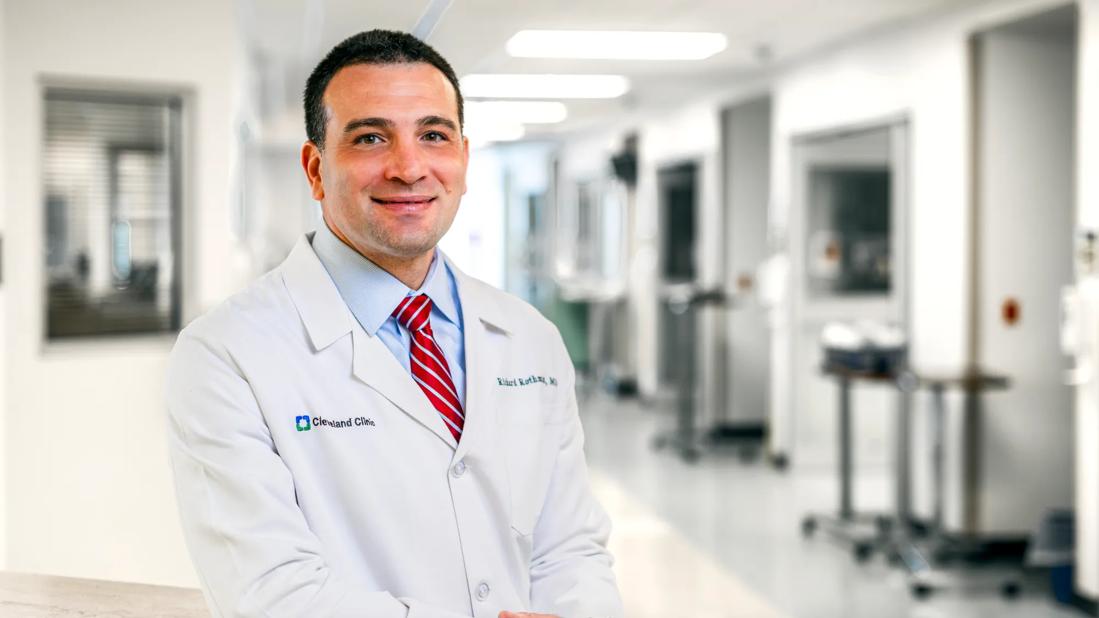
After launching Cleveland Clinic Hospital Care At Home℠ (HCAH) in April 2023 to serve patients requiring acute care at Cleveland Clinic Indian River Hospital in Vero Beach, Florida, Cleveland Clinic expanded the pilot to Cleveland Clinic Tradition Hospital in December with rollout to its remaining three Florida hospitals scheduled for 2024.
Advertisement
Cleveland Clinic is a non-profit academic medical center. Advertising on our site helps support our mission. We do not endorse non-Cleveland Clinic products or services. Policy
“The way we deliver care today is not how we will deliver care tomorrow,” says Richard Rothman, MD, Chief Medical Operations Officer for Cleveland Clinic in Florida and Vice Chief of the Integrated Hospital Care Institute for Cleveland Clinic. “Cleveland Clinic Hospital Care At Home is a glimpse into the future of healthcare delivery.”
Patient eligibility to be hospitalized at home is based on a complete medical evaluation and determined in either the Emergency Department at Cleveland Clinic Indian River Hospital or within one of the hospital’s inpatient units. “Individuals who meet the criteria are offered the choice to receive hospital-level care at home or in a traditional hospital setting,” says Dr. Rothman, noting they must live within a 30-mile radius of the hospital to participate.
Once admitted, patients are set up at home with technology to enable transmission of biometric data, bidirectional communication, and coordination with the hospital’s Clinically Integrated Virtual Command Center (CIViC) located in Vero Beach. The CIViC team is comprised of physicians, advanced practice providers, and nurses who are responsible for directing patient care.
“Our specially trained caregivers are supported by a technology platform that organizes the patient’s data and care plan into actionable real-time information shared by the patient’s entire medical team,” Dr. Rothman explains. “We also have a network of internal and external clinical service providers who deliver care within the patient’s home.”
Advertisement
Cleveland Clinic Hospital Care At Home admitted 27 patients in its first month, double the average of validated peer benchmarks. By the end of its first six months, 277 patients had been admitted, with an average length of stay of 5.3 days.
“That represents the elimination of more than 1,000 brick and mortar hospital days since April,” says Dr. Rothman. “We’re currently averaging a daily census of about 7 patients though we had a peak of 12 in October. With the recent addition of Tradition Hospital, we will soon have a full hospital floor of patients being cared for at home.”
The HCAH team cares for patients with chronic heart failure, chronic obstructive pulmonary disease, sepsis, cellulitis, pneumonia, and diverticulitis, among other conditions. Often these individuals have other chronic diseases and comorbidities.
“Initial patient feedback has been very positive,” says Dr. Rothman. “Our Press Ganey patient experience scores surpassed those for in-hospital care while having similar illness severity levels.”
He also points out that the readmission rates to-date are lower for Hospital Care At Home than the brick and mortar hospital (9.6% versus ~13%).
Having completed the rollout of Hospital Care At Home at Tradition Hospital in Port St. Lucie, it will be expanded in January to Cleveland Clinic Martin North Hospital and Cleveland Clinic Martin South Hospital, with the final addition of Cleveland Clinic Weston Hospital later this year.
All five hospitals will be supported by the 24/7 virtual command center in Vero Beach. In December the CIVC was moved from a temporary location near Indian River Hospital to a newly designed, state-of-the-art facility that will accommodate the growing team.
Advertisement
“The command center is currently staffed by two hospital medicine physicians and a team of 10 nurses, but we expect to double the size of our clinical staff in the next 3 to 6 months,” says Dr. Rothman.
Cleveland Clinic Hospital Care At Home is part of a larger national movement that includes nearly 300 hospitals across the country. Developed in the United States in the mid-1990s, the care model gained traction when the Centers for Medicare and Medicaid Services (CMS) launched the Acute Hospital Care at Home program in November 2020 in response to the COVID-19 pandemic.
According to Conor Delaney, MD, PhD, President of Cleveland Clinic Florida Market, the tripartite goal for Hospital Care At Home is to improve outcomes for patients and provide a better care environment for caregivers.
“Our hospitalist-led approach has demonstrated positive early results, an indication we are on the right path,” says Dr. Delaney. “I have to commend our hospital medicine and nursing teams for guiding the successful implementation of Hospital Care At Home.”
While two years of planning with key clinical, operational, financial, and information technology stakeholders preceded hospitalizing the first Cleveland Clinic patient at home, Dr. Rothman notes the team still encountered foreseen and unforeseen obstacles that required them to be adaptable and “to think big.”
He shared some of the key learnings from the launch that may guide others ready to implement this model of care.
Advertisement
For more information, visit Cleveland Clinic Florida ConsultQD. Subscribe to the Florida Physician Newsletter.
Additionally, follow us on X (formerly Twitter), Facebook, and LinkedIn.
Advertisement
Advertisement

Cleveland Clinic Weston Hospital’s collaborative model elevates care for complex lung diseases

Interventional pulmonologists at Cleveland Clinic Indian River Hospital use robotic technology to reach small peripheral lung nodules

Trained in the use of multiple focal therapies for prostate cancer, Dr. Jamil Syed recommends HIFU for certain patients with intermediate-risk prostate cancer, especially individuals with small, well-defined tumors localized to the lateral and posterior regions of the gland.

Cleveland Clinic Weston Hospital is actively recruiting patients for an international, multicenter, phase III study comparing MIS versus open interval cytoreduction following neoadjuvant chemotherapy in patients with stage IIIC-IV epithelial ovarian cancer.

Urologic oncologist with Cleveland Clinic in Florida performs robotic-assisted retroperitoneal lymph node dissection.

Cleveland Clinic researchers in Florida identify unexpected survival benefit

Noninvasive, radiation-free imaging supports treat-to-target IBD care

Cleveland Clinic in Florida transplant specialists perform advanced surgical approach for living kidney donation